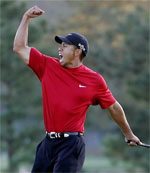Athlete and celebrity endorsement dollars are best spent when targeting a young or minority sports or outdoor consumer in the U.S. That is one conclusion generated by the SportsOneSource 2009 Brand Strength Report that measures how American consumers view sports and outdoor brands.
When assessing the trends among consumer demographic groups, SportsOneSource found that roughly 25% of African American consumers that responded to the SportsOneSource Brand Strength survey said that athlete or celebrity endorsements were at least somewhat important when making brand purchase decisions. Nearly 12% of the African American consumers polled suggested that such endorsements were extremely important when making purchase decisions. Nearly 23% of Hispanic consumers polled said that the endorsements were at least somewhat important, including more than 10% that said athlete or celebrity endorsements were extremely important when making purchase decisions related to sports or outdoor products.
Male minority respondents were far more likely to see athlete or celebrity endorsements as at least somewhat important in their purchase decisions, with 28.5% of African American males and 26.5% of Hispanic males suggesting at least some importance for the endorsements. The African American male response was about 700 basis points higher than the female responses in the same race group, while the Hispanic male group saw a nine point variance with their female counterparts in their race group.
Young, teenage consumers were also more likely to respond favorably to endorsements, according to the SportsOneSource research report.
Nearly 24% of survey respondents aged 12 to 14 years old said that athlete or celebrity endorsements were at least somewhat important when making brand purchase decisions related to sports or outdoor products. That percentage dipped to less than 17% for the 15- to 17-year-old group, but then rose steadily again as consumers grew into their mid-thirties. The influence of endorsements fell steadily for age groups over 35 years of age.
The report found that respondents with household incomes under $40,000 were also more likely to be influenced by an athlete or celebrity endorsement of a brand. Not surprisingly, the respondents with children under the age of 18 years old at home were also more influenced by the endorsement or at least their children made it influential. There was a 400 basis point variance between those with children (15%) and those without children (11%) when considering the importance of the athlete or celebrity endorsement.
The influence of what friends or peers wear on the purchase decisions of the consumers surveyed found some interesting trends as well. The minority male respondents were again more likely to be influenced by a peer group, with approximately 27% of both the African American and Hispanic male consumers suggesting that what their friends or peers wear was at least somewhat important in their purchase decisions of sports or outdoor products.
“What surprised us most was the influence of peers on the purchase decisions of some consumers,” said James Hartford, chief market analyst for The SportsOneSource Group. “We expected to see higher peer pressure with the teen group, but were surprised to see the keeping up with the Joneses' displayed in the upper income brackets.”
More than 20% of the survey respondents with household incomes over $125,000 said that what friends or peers wear was at least somewhat important to their purchase decisions. The group also had the highest percentage (8.4%) that felt the influence was most extremely important. No other income group had at least 20% suggesting that peer influence was important.
One area that is quite interesting in the report is the analysis of the brands that may benefit most from the association with an athlete or celebrity. For instance, while 9% of the overall survey respondents said they purchased the Jordan brand, that percentage jumped to more than 22% for the respondents that saw athlete or celebrity endorsement as extremely important when making brand purchase decisions. While the data surrounding Jordan is to be expected, the numbers for brands like Puma, K-Swiss, Timberland and Fila were also strong, which is interesting since most arent attached to a dominant athlete endorser like Michael Jordan.
This data and analysis and much more are included in the recently released Purchase Influence Report from The SportsOneSource Group. For more information on this report and other research available from The SportsOneSource Group, please call 704.987.3450 x 110 or e-mail to:
research@SportsOneSource.com
The Brand Strength survey was designed to gauge the strength of sporting goods brands from all areas of the industry. To qualify for this survey, each respondent must have had an interest in sports or outdoor activities. A total of 8,001 responses were collected, gaining information on over 300 brands.

 Athlete and celebrity endorsement dollars are best spent when targeting a younger or minority sports or outdoor consumer in the U.S. That is one conclusion generated by the SportsOneSource 2009 Brand Strength Report that measures how American consumers view sports or outdoor brands. But the study also found some more unexpected results, such as the importance of peer pressure on upper income consumers. Based on the data collected during the survey process of the report development, brands will find their paid endorsement dollars going quite a bit further if the target consumer is more clearly defined.
Athlete and celebrity endorsement dollars are best spent when targeting a younger or minority sports or outdoor consumer in the U.S. That is one conclusion generated by the SportsOneSource 2009 Brand Strength Report that measures how American consumers view sports or outdoor brands. But the study also found some more unexpected results, such as the importance of peer pressure on upper income consumers. Based on the data collected during the survey process of the report development, brands will find their paid endorsement dollars going quite a bit further if the target consumer is more clearly defined.












